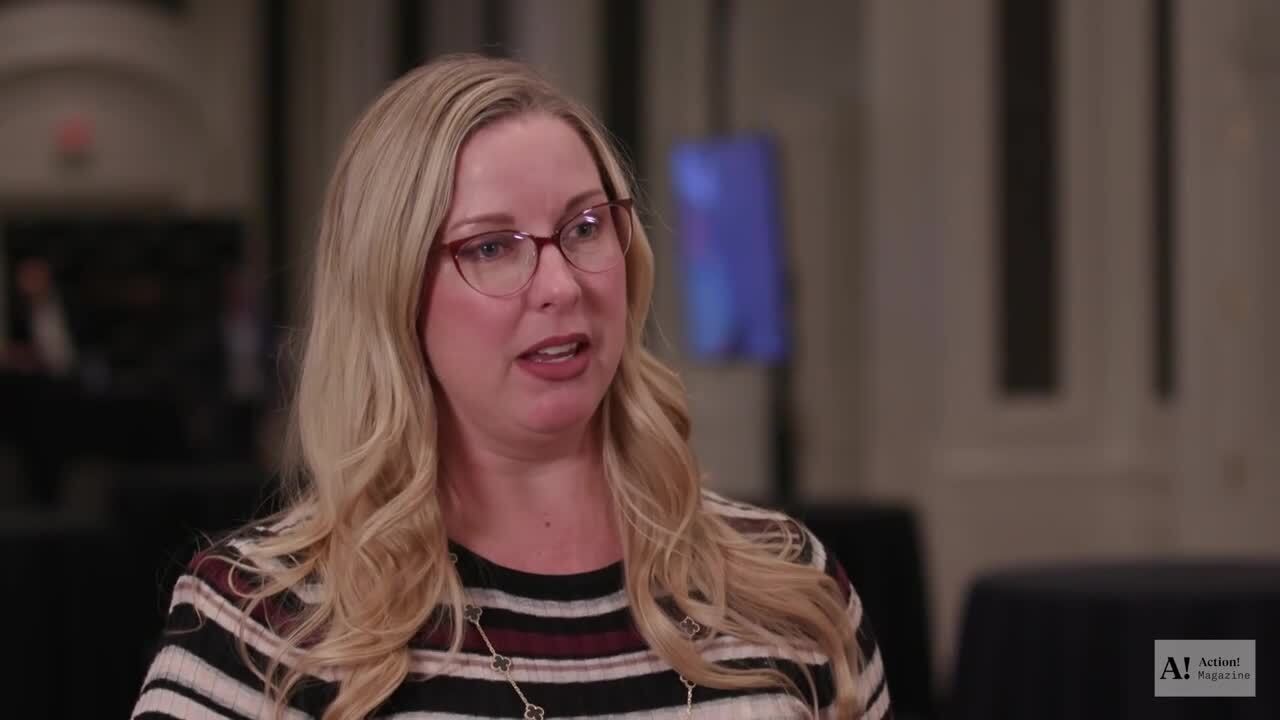Financial advisors today must tackle a myriad of challenges in their daily practice.
Most juggle many roles in order to succeed in this industry; asset manager, financial planner, psychologist and marketer. But there is one challenge that has risen through the ranks – hiring and retaining talent.
Every business wants to attract and retain the best employees, but this is often easier said than done.
While I was attending this year's MarketCounsel Summit event, I caught up with Martine Lellis, Chief Talent & Administrative Officer at Mercer Advisors. She shared some insight on how best to hire and retain talent at your firm.
Click on the video below to watch the full interview.

Transcript:
What are some of the biggest challenges facing advisors right now?
Martine Lellis: There's a shortage of talent in our business, and we have a hard time gaining access to it. What we see happening right now is that we're just trading talent around. There's a whole pool of talent, but it's a very small pool of talent. Secondly, advisors are so used to focusing on serving their clients. That's the primary reason that they exist in this business. That's the reason why they want to work in this business. They are thinking about how to get talent to help support them, but that's always second on their plate. They aren't necessarily trained HR professionals going out there and looking for the talent; they're always thinking about their clients first. So I'd say those are probably the top two issues that we have.
How do you find people that are the right cultural fit for your firm?
Lellis: This is incredibly important because we all have a culture that exists in our organization. It all comes down to that interview process and making sure that you ask the right questions, but that's really hard, and especially in this more virtual environment. It's very different to get to the heart of what a person thinks about culture or how they're going to be on a day-to-day basis. And then just really making certain that you have really good open-ended questions. You know, none of these yes, no questions, what we call a closed-ended question where they can just say yes or no you have to have people talking in complete sentences, showing the true heart of what they are and why they're motivated to actually come to work for you. And so making sure they've done their research, and they understand what's important about the organization that you are running that makes them want to join that organization. That's really critical. You want to know that they want to be there and that they want to join the culture that you have actually built.
What happens when it turns out they are not the right fit?
Lellis: The issue of cutting ties with an organization or cutting ties with an employee and making sure that you do this in a graceful way is a really good question. Because sometimes we do get to that point. We've either made a mishire, maybe an employee is in the wrong role, and we don't have another role for the employee, or there's maybe performance issues that are occurring with the employee and I think it really all comes down to doing this gracefully. And the way that you do that is by making sure that the employee has choices, and that is probably the key thing that I think you have to create for the employee.
If you leave an employee without a choice, then the employee has it in their mind that the company did something to them. But if you put the power back to the employee, and an example that I'll give you is saying, okay, look, we are going to have to go down the path of putting you on a performance improvement plan because you're not meeting certain standards and here's clearly what those standards are. Here's clearly how you have not met them. And here's clearly what you would have to do. And it's going to be really difficult and the employee should have a clear understanding of why that's going to be difficult, or Option B would be to allow for a graceful transition at an exit. So as you can find something that works better for you. Most of the time when the employee is given the grace of that choice, and time to really contemplate and think about it, they will come back with a choice and choose one of those options. Now, it's important to understand that some employees can be rehabbed and can actually improve. And I think it's important to keep an open mind about that as well.
What’s the best way to attract top talent to your RIA?
Lellis: Well, I think what's most important is that you have a very clear career path and trajectory in order to attract and retain talent. So you're asking me about what can you do today? And I think today is making certain, you know, exactly how to explain to an employee when they come on board what they can anticipate their progress will be because I think one of the hardest things that we have in our industry is that it is sometimes a long career path to grow someone from an entry-level position into becoming an advisor. And I mean a trusted advisor, someone who can sit in front of a client and will trust them with their money, making those important decisions about their money. That can take a lot of time. But what an employee will want to see if they want to see what incremental steps can I take along the way. Do you have promotions that I can move into, other roles that I can progress upon, and I think when you can show that and you can show that very clearly, and this career progression, I think that makes it much more attractive than an organization that can't show them.
This blog is sponsored by AdvisorEngine Inc. The information, data and opinions in this commentary are as of the publication date, unless otherwise noted, and subject to change. This material is provided for informational purposes only and should not be considered a recommendation to use AdvisorEngine or deemed to be a specific offer to sell or provide, or a specific invitation to apply for, any financial product, instrument or service that may be mentioned. Information does not constitute a recommendation of any investment strategy, is not intended as investment advice and does not take into account all the circumstances of each investor. Opinions and forecasts discussed are those of the author, do not necessarily reflect the views of AdvisorEngine and are subject to change without notice. AdvisorEngine makes no representations as to the accuracy, completeness and validity of any statements made and will not be liable for any errors, omissions or representations. As a technology company, AdvisorEngine provides access to award-winning tools and will be compensated for providing such access. AdvisorEngine does not provide broker-dealer, custodian, investment advice or related investment services.





